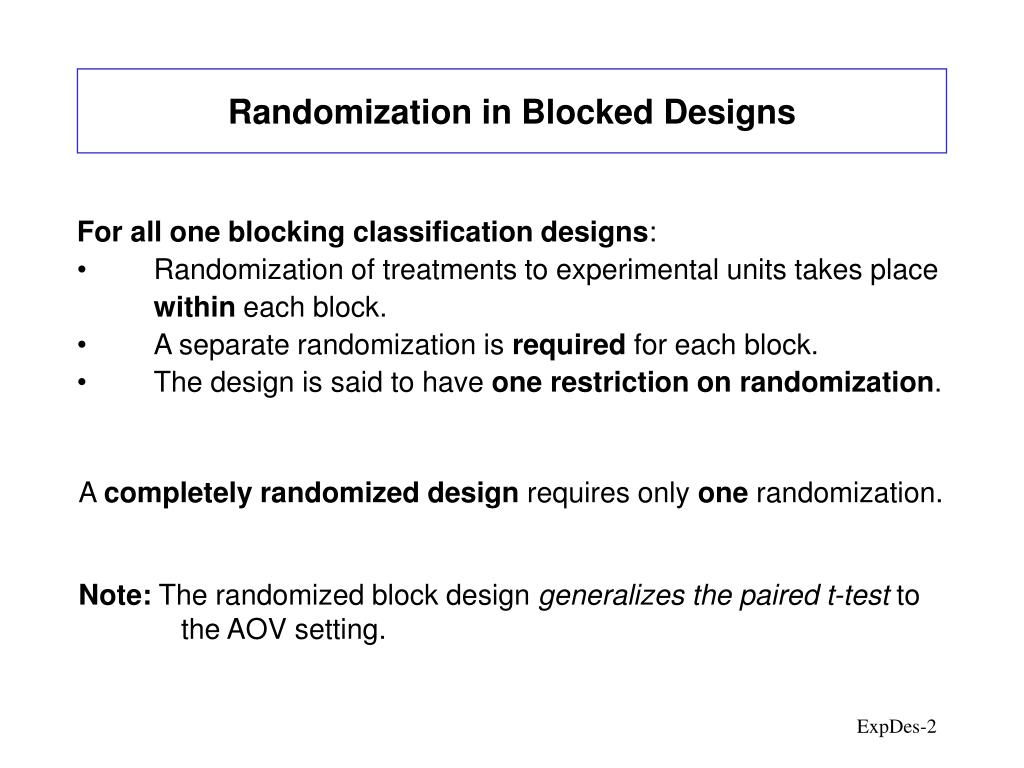

- #Psyscope block randomizing how to
- #Psyscope block randomizing update
- #Psyscope block randomizing code
- #Psyscope block randomizing trial
They question order will show up randomly either Q1-Q2-Q3-Q4 or Q1-Q3-Q2-Q4. Just use Randomize Questions (or if on different pages, Randomize Pages) and choose Q2 and Q3 as anchors. In that case, you wouldn't need Randomized Blocks. If random, I'm seeing that all you're really doing here is randomizing the order of Q2 and Q3. That said, do you want to have control over which pattern gets shown? Or do you just want it to randomly choose the pattern? You would need to use perl inside the constructed list in order to use if/else statements to choose different patterns in the constructed list. Use constructed list logic to create the question patterns that you need: Using randomized blocks with a constructed list would be the way to do this. answered by Paul Moon Platinum ( 100,020 points) Setup Q1-Q4 and take it for a test drive. Select the Use Constructed List radio button and choose OrderConList. Define 4 blocks with start and end anchors as follows. Now click on the Randomized button and select Blocks. If you want another condition applied, you can modify the Perl script "if statement". The constructed list will select either 1-2-3-4 or 1-3-2-4 based on a random number generated between 1+2. if you change the background colour, you don’t need to change the code).Now create a constructed list which uses OrderList as the parent list. You want randomly chosen faces to appear for a. 1) Consider an FFA/PPA localiser in fMRI. You might also want to consider changing the visibility of the stimulus directly, by controlling its opacity value. blocks then this may not work and it's going to get very ugly very quickly.
#Psyscope block randomizing code
Make sure the code component is above the text component, so the latter always receives the latest value for the colour variable
#Psyscope block randomizing update
Then in your text stimulus component, simply put $current_instruct_colour in its “Color” field, set to update on every repeat. ThisExp.addData('instruction_colour', current_instruct_colour) If block_type = 'mixed': # randomised orderĬurrent_instruct_colour = instruct_colours.pop() Instruct_colours = * 8 + * 8 # fixed (reverse) order This ensures that you don’t get the unbalanced mix of conditions you’re currently finding. Note that instead of randomly sampling a value on each trial, we create a balanced list of conditions and then randomly shuffle if required.

Then in your routine, insert a code component and put in something like the code below in the “begin routine” tab. The outer loop is set to be “sequential” and is connected to a conditions file that simply looks like this: block_type An inner loop to run your trials and an outer loop to run your blocks. I was going to put a loop around the current routines

#Psyscope block randomizing how to
I was going to put a loop around the current routines as this would also solve my issue about how to show the correct feedback, but my issue there is that the new loop will contain instructions that I don’t want to be included. you could have 10 of one and 6 of another. This works but the number of trials is not equal, e.g. What specifically went wrong when you tried that?: I used the coin flip function to change the colour of the stimulus that instructs the participant to make a response or not: coinflip=np.random.randint(3, size=1) Task orders for both the encoding and test phases were counterbalanced across participants. At the moment we also only have one repeat of each block, but we could also present more than one repeat of each block by controlling the number of rows assigned to each block in our ‘chooseBlocks. Until now, we have a randomised block design, where the order of blocks is set to random. This method increases the probability that each arm will contain an equal number of individuals by sequencing participant assignments by block.
#Psyscope block randomizing trial
I want to then run a mixed block where the 16 practice trials are presented in a random order. Items from these sets were presented in a block- randomized sequence. Counterbalancing is simply an extension of blocking. Block randomization is a commonly used technique in clinical trial design to reduce bias and achieve balance in the allocation of participants to treatment arms, especially when the sample size is small. In my stop signal task participants complete 16 practice trials, one block of 8 trials in which they make a response, and then one block of 8 trials where they withhold their response.


 0 kommentar(er)
0 kommentar(er)
